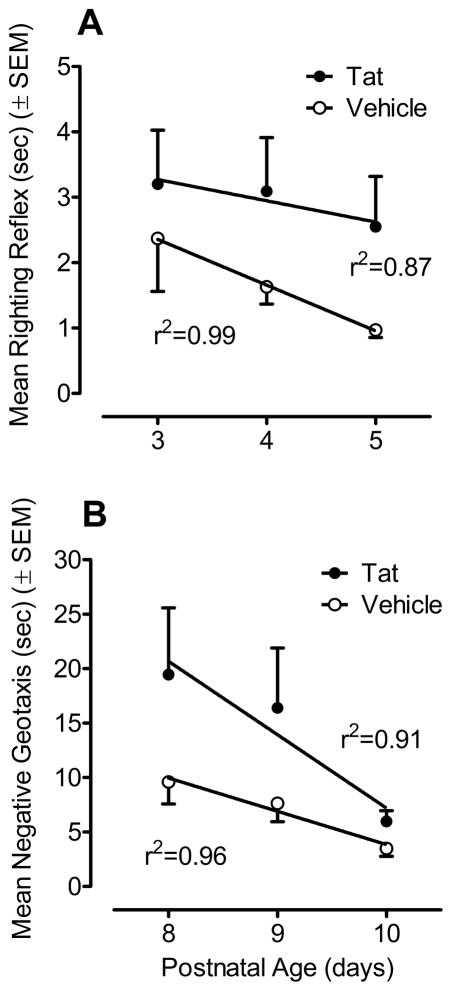Figure 2.
Mean (± SEM) response time with the best fit linear regression across three days for each treatment group. (A) A significant treatment effect was detected for righting reflex across all test days (PD3-5) (p ≤ 0.05); Tat1-86 -treated animals were much slower in the righting reflex compared to the VEH-treated group. A significant test day effect was found (p ≤ 0.05) with a prominent linear component (p ≤ 0.05), indicating that execution of the righting reflex improved across test days. Planned contrast analyses for each treatment group revealed a significant linear component for the VEH-treated animals (p ≤ 0.05) which was not found in the Tat1-86-treated group. Thus, the Tat1-86 treatment appeared to disrupt maturation of the righting reflex across test days. (B) A significant overall treatment effect was detected for negative geotaxis across all test days (PD8-10) (p ≤ 0.05); Tat1-86 -treated animals had overall slower response latencies compared to VEH-treated animals. A significant day effect was found (p ≤ 0.05) with a prominent linear component (p ≤ 0.01), indicating that execution of the righting reflex improved across test days. No treatment x test day interaction was detected, suggesting that both groups showed a similar rate of improvement across test days, approximating similar terminal levels of acquisition.

